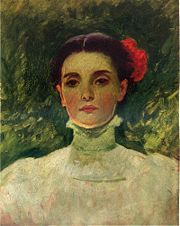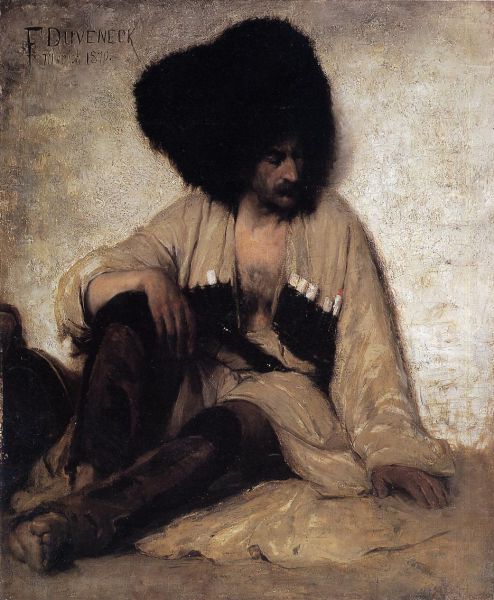Frank Duveneck (1848-1919)
Get a Duveneck Certificate of Authenticity for your painting or a COA for your Duveneck drawing or sculpture.
For all your Duveneck artworks you need a Certificate of Authenticity in order to sell, to insure or to donate for a tax deduction.
How to get a Duveneck Certificate of Authenticity is easy. Just send us photos and dimensions and tell us what you know about the origin or history of your Duveneck painting, drawing or sculpture.
If you want to sell your Duveneck painting, drawing or sculpture use our selling services. We offer Duveneck selling help, selling advice, private treaty sales and full brokerage.
We have been authenticating Duveneck and issuing certificates of authenticity since 2002. We are recognized Duveneck experts and Duveneck certified appraisers. We issue COAs and appraisals for all Duveneck artworks.
Our Duveneck paintings, drawings and sculptures authentications are accepted and respected worldwide.
Each COA is backed by in-depth research and analysis authentication reports.
The Duveneck certificates of authenticity we issue are based on solid, reliable and fully referenced art investigations, authentication research, analytical work and forensic studies.
We are available to examine your Duveneck painting, drawing or sculpture anywhere in the world.
You will generally receive your certificates of authenticity and authentication report within two weeks. Some complicated cases with difficult to research Duveneck paintings, drawings or sculpture take longer.
Our clients include Duveneck collectors, investors, tax authorities, insurance adjusters, appraisers, valuers, auctioneers, Federal agencies and many law firms.
We perform Frank Duveneck art authentication, appraisal, certificates of authenticity (COA), analysis, research, scientific tests, full art authentications. We will help you sell your Frank Duveneck or we will sell it for you.

Frank Duveneck was an American figure and portrait painter born in Covington Kentucky. Duveneck, born with the name Frank Decker, was raised by a German, working-class family. Duveneck’s father died when he was a small child and his mother remarried, changing the family name from Decker to Duveneck.
The family relocated to Cincinnati, Ohio where Duveneck worked for German artisans who decorated Catholic churches and studied under the painter Johann Schmitt.

Duveneck showed great skill in the arts at a young age and was prompted to study in Germany. From 1870 to 1873 Duveneck enrolled in the Royal Academy in Munich and studied under Wilhelm von Diez and Wilhelm Leibl. Duveneck was praised as a student, winning many painting awards for his mastery of the “bravura brush” technique. Duveneck concentrated on portrait paintings, which were frequently exhibited in Munich.

Along with William Merritt Chase, John Henry Twachtman and Walter Shirlaw, Duveneck became an influential part of a group of young, American artists who broke away from the popular Hudson River School.

Duveneck returned to Cincinnati for only a few years before returning to Munich as a teacher. Duveneck opened his own schools in Munich and in a small Bavarian village named Polling. Several American painters saw Duveneck’s portrait work and followed Duveneck to Munich. Duveneck’s loyal students were known as the “Duveneck Boys”, and included Otto Bacher, Joseph deCamp and Theodore Wendel.

In 1886 Duveneck married a student in his school named Elizabeth Boott. When Boot died from pneumonia Duveneck became less active as an artist, except for a monumental sculpture he made in his wife’s honor. Duveneck spent some time in France and Italy but returned to the United States, where he spent the last years of his life teaching at the Cincinnati Fine Arts Academy.

Duveneck’s paintings can be seen in major museums across the United States. The Metropolitan Museum of Art in New York City, the National Gallery of Art in Washington, DC, the Cincinnati Art Museum are only a few of the many collections that house Duveneck’s work. Do you think you own a painting by Frank Duveneck? Contact us. We are the Frank Duveneck experts.
Reviews
1,217 global ratings
5 Star
4 Star
3 Star
2 Star
1 Star
Your evaluation is very important to us. Thank you.
